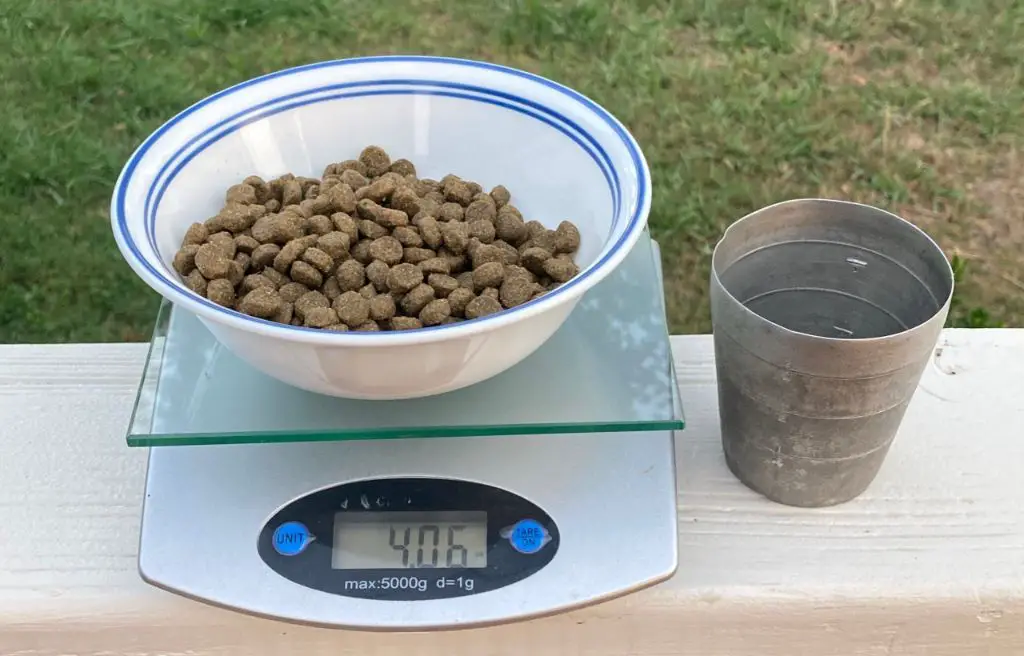Introduction
The question of whether or not it’s healthy to feed dogs commercial dog food every day is one that stirs much debate. On one side are proponents who argue that these scientifically formulated foods provide complete and balanced nutrition in a convenient and affordable package. Others counter that dog food lacks fresh, whole ingredients and relies too heavily on grains, additives, and processing. Both make valid points worth exploring.
This Introduction aims to hook interest by presenting a concise overview of the debate over the merits and drawbacks of feeding dogs commercial dog food daily. Structuring the content this way helps provide context and the rationale for diving deeper into the nuances around this issue.
Nutritional Composition of Dog Food
Commercial dog foods are formulated to provide complete and balanced nutrition for dogs. Here’s an overview of the typical ingredients:
Proteins – High-quality proteins like chicken, lamb, fish, eggs are the first ingredient in most dog foods. Protein helps build muscle, repair tissue, and provides energy. The Association of American Feed Control Officials (AAFCO) recommends adult dogs get a minimum of 18% crude protein in their diet.
Carbohydrates – Whole grains like rice, barley, and oats are common carb sources. Carbs provide energy, fiber, and nutrients. Carbs should make up less than 50% of the diet according to AAFCO recommendations.

Fats – Chicken fat, fish oil, and other animal-based fats supply essential fatty acids and enhance the palatability and absorption of fat-soluble vitamins. The fat content ranges from 5-15% to provide energy and satisfy energy needs.
Vitamins & Minerals – Dog foods are supplemented with vitamins like A, B, D, E and minerals like calcium, phosphorus, zinc to meet nutritional requirements at various life stages.
Benefits of Commercial Dog Food
Commercial dog foods provide many benefits for pet owners and their dogs. The primary benefit is the balanced nutrition they offer. Dog food companies employ veterinary nutritionists to formulate recipes that provide complete and balanced nutrition for dogs based on their life stage and activity level. This ensures dogs get the right proportions of protein, fat, carbohydrates, vitamins and minerals they need in their diet without nutritional deficiencies or excesses.
Another major benefit of commercial dog food is convenience. Dog owners don’t have to research recipes, shop for multiple ingredients, prep, cook and measure homemade meals. Quality dog foods are formulated to provide nutrition in a ready-to-eat kibble or canned/pouched format that’s easy for owners to scoop and serve. This saves considerable time and effort compared to making homemade dog food.
Additionally, most commercial dog foods are recommended by veterinarians. Major dog food brands conduct feeding trials to prove their formulas provide complete nutrition and properly nourish dogs. This evidence-based approach gives veterinarians confidence recommending major brands that meet nutritional standards and feeding trial protocols. Owners can feel assured feeding vet-recommended commercial diets formulated for their dog’s life stage and needs.
Potential Downsides of Dog Food
While commercial dog foods provide complete and balanced nutrition for dogs, there are some potential downsides to be aware of:
Processing reduces nutrients – The high heating, pressure extrusion, and other manufacturing processes used to create dry dog foods can destroy some of the natural vitamins, antioxidants, and other nutrients found in fresh foods.

Controversial ingredients – Some dog foods contain cheap filler ingredients like corn, wheat, soy, and by-products that may be difficult for some dogs to digest. There are also concerns around chemical preservatives used.
Lack of variety – Feeding the same commercial dog food day in and day out can get monotonous for dogs. Variety helps provide different proteins, fats, fibers, and micronutrients.
While commercial dog foods aim to provide complete nutrition, the heavy processing and potential for lower quality ingredients are downsides to consider. Rotating foods or incorporating some fresh foods can help add variety.
Homemade Food as an Alternative
While commercial dog food provides a convenient and balanced feeding option, many dog owners choose to make their own homemade dog food instead. Homemade food has some potential benefits compared to store-bought kibble or canned food:
You can tailor the recipe to your dog’s specific nutritional needs. For example, you can add more protein for active dogs, regulate fat content if your dog is overweight, or avoid certain ingredients that your dog may be allergic or sensitive to.
Home cooking uses fresher ingredients like raw meat, vegetables, and grains. The nutrients in fresh foods can be more bioavailable compared to the processing used in commercial kibble.
With homemade food, you have more control over the ingredients and can provide more variety in your dog’s diet. Commercial dog foods typically contain the same main ingredients like chicken, rice, corn etc. Home cooking allows you to rotate through different proteins, fruits/veggies, and grain sources.
However, it’s important to consult your veterinarian and canine nutritionist if going the homemade route. Careful planning is required to ensure the meal plan is fully balanced and provides all the micro- and macronutrients a dog needs.
Tips for Choosing a Dog Food
When selecting a dog food, it’s important to choose one that will meet your dog’s unique nutritional needs. Here are some tips to help you pick the right food:
Consult your veterinarian – Talk to your vet about any special dietary requirements your dog may have. Certain health conditions may require a therapeutic diet. Your vet can provide specific recommendations.
Read the label carefully – Make sure the first ingredient is a high-quality protein source like chicken, lamb, or fish. Avoid dog foods with fillers like corn, wheat, or soy. Check that the food meets AAFCO standards for nutritional completeness.
Transition food slowly – When changing foods, mix a little of the new food in with the old food. Gradually increase the ratio of new to old over 7-10 days. This allows your dog’s digestive system to adapt and avoid gastrointestinal upset.

Recommended Feeding Amounts
The amount of dog food you should feed your dog depends on several factors including their size, age, and activity level. It’s important to follow the feeding guidelines on the dog food label, which provides recommended amounts based on your dog’s weight.
For puppies, the label will indicate how much to feed per day as the puppy grows to adulthood. For adult dogs, the daily recommendations are given per pound of body weight. Start by feeding the minimum amount, monitor your dog’s body condition, and adjust up or down as needed to maintain an ideal weight.
In general, smaller dogs need less food and larger, more active dogs may require more. Senior dogs tend to become less active and require fewer calories. Monitor your dog’s weight routinely and reduce quantities if they start to become overweight. Feeding approximately 25% less than the label guidelines can help take off excess pounds.
Sticking to the recommended feeding amounts based on your dog’s unique needs, age, and size will help provide balanced nutrition without over or underfeeding.
Potential Health Risks
Feeding dogs primarily commercial dog food can lead to some potential health issues over time if not done carefully. Two of the main risks are obesity and nutrient deficiencies or toxicity.
It’s easy for dogs to become obese if they are overfed commercial dog food. Most dog foods are very calorie dense, with a cup containing as many calories as two or more cups of homemade food. It’s important to carefully follow feeding guidelines based on your dog’s ideal weight and activity level. Overfeeding extra kibble, treats, and table scraps can quickly lead to weight gain.
Dog foods are formulated to provide complete and balanced nutrition. However, lower quality foods may have nutrient deficiencies or toxicities over time if fed exclusively. For example, some dog foods may be deficient in certain vitamins or minerals. Or others may contain too much of certain synthetic nutrients. It’s important to choose a high-quality food and variety to reduce this risk.
With appropriate portion sizes and a mix of quality commercial dog foods, these risks can be minimized. But it’s important for owners to be mindful of their dog’s weight, energy levels, and health to spot any issues early.
Best Practices
When feeding your dog commercial dog food, there are some best practices to follow for their health:
Feed Appropriate Amounts

It’s important not to overfeed your dog. Follow the feeding guidelines on the dog food package based on your dog’s weight and activity level. Don’t “free-feed” the dog food by leaving it out all day. Stick to scheduled meal times.
Provide Some Homemade/Raw Food
For variety, you can supplement commercial dog food with some homemade food or raw food a couple times a week. Things like cooked chicken, rice, carrots, and eggs can give your dog some different nutrients.
Get Your Vet’s Opinion
Check with your veterinarian on whether your dog food is providing a complete and balanced diet for your dog’s needs. Ask if any supplements are recommended. And monitor your dog for any signs of food allergies or sensitivities.
Conclusion
To summarize the main points, feeding dogs commercial dog food every day provides a balanced and nutritionally complete diet in a convenient form. However, it’s important to choose high-quality brands without unhealthy fillers and to monitor your dog’s health for any signs of food intolerances. Rotation between commercial food, homecooked meals, and raw food can help provide diet variety. The ideal approach is likely a balance based on your specific dog’s needs and preferences. Moderation is key, as is following feeding guidelines and veterinary advice. With some care taken in selection and monitoring, dogs can generally thrive on commercial dog food as their regular diet. But variety and vigilance for health issues is still advised. Overall, commercial dog food can be a healthy regular diet as part of a balanced approach.